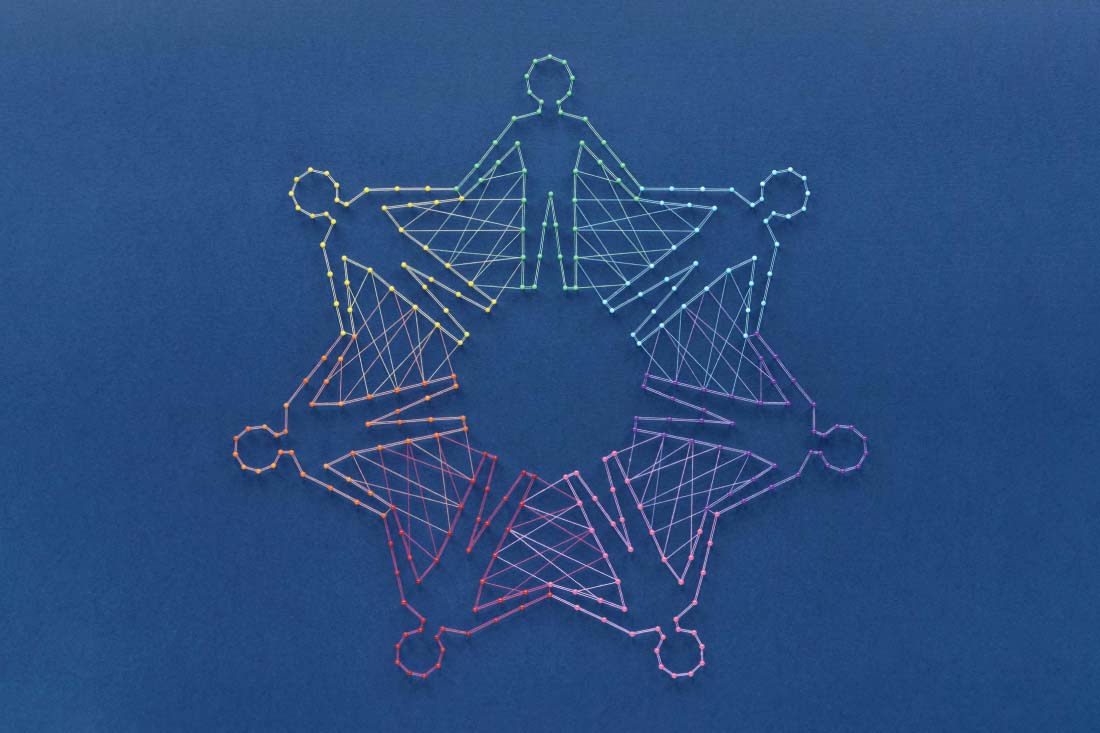One of the biggest challenges in running a company today is creating or maintaining a company culture that drives productivity. Research shows employees value psychological safety in their workplace, as more than half of surveyed employees consider positive work culture more important than salary. But company culture doesn’t just develop overnight and organizations must put intention and strategy into building it, especially with hybrid teams. Enter culture committees: a proven way to establish and maintain company culture.
Find out what a culture committee does, why you should consider starting a culture committee program and best practices in creating one or more in your organization.
What is a culture committee?
A culture committee is a group of employees who promote and nurture an organization’s culture. An effective company culture committee includes members from across the organization and from different demographics or levels of experience to ensure diverse perspectives and ideas. More than a party planning crew, these groups must be strategic to boost employee engagement, strengthen relationships and reinforce the organization’s core values. This can include creating development and training programs, fostering employee feedback mechanisms and, yes, planning social events to help employees feel included.
Challenges of maintaining culture in hybrid teams
Offering hybrid work opportunities and flexible schedules is a proven way to improve employee satisfaction and well-being, but establishing and maintaining a hybrid work culture presents unique challenges.
Fewer in-person opportunities
The lack of predictable, consistent face-to-face interaction can lead to feelings of isolation among employees working remotely. This disconnect diminishes team spirit and makes it difficult for employees to feel like they’re part of a unified organization. Without the casual conversations and spontaneous brainstorming sessions that occur in a physical office, remote employees may miss out on valuable relationship-building opportunities that foster collaboration and innovation. Organizations with hybrid teams must find innovative ways to promote cohesion and belonging in the workplace, such as culture committees.
Varied employee experiences
Working in a hybrid environment can mean varied experiences for employees. Workers in the office may have different interactions and opportunities compared to their remote counterparts. For example, in-office workers are more likely to be offered a promotion. They may also have more access to mentorship and networking opportunities. This can create a divide that culture committees can work to address, creating inclusive practices to ensure all team members feel valued and engaged, regardless of their location.
Communication challenges
Difficulties keeping in touch with colleagues can harm more than collaboration and productivity. They can also exacerbate cultural discrepancies within hybrid teams. With team members spread across different locations and time zones, getting everyone on the same page can be a logistical nightmare. Misunderstandings can arise more easily when non-verbal cues are absent, leading to conflicts or feelings of disconnection. Companies must invest in robust communication tools and establish clear protocols to promote transparency. Regular check-ins and cultural committee initiatives can also ensure every voice is heard and acknowledged.
Evolving nature of work
As organizations adapt to new technologies and work methodologies, employees may feel uncertain about their roles and the company’s direction. This can erode trust and commitment to the organization. Leaders should prioritize open dialogue about changes and actively involve employees in discussions about the future of work. Culture committees can play a big role in this effort to foster a sense of ownership and alignment with the organization’s mission and values.
Benefits of culture committees for hybrid teams
When culture committees function effectively in an organization, employees experience higher levels of psychological safety and a sense of belonging, which leads to better productivity and personal health. Creating a successful culture committee program offers many benefits to hybrid teams, including:
- Improved trust and communication among team members and departments
- More effective collaboration
- Higher levels of employee engagement, involvement and commitment to company goals
- Lower levels of personal stress and better work-life balance
- More creativity and innovation as employees feel safe expressing ideas
- Higher retention and better talent acquisition
- Lower rates of absenteeism
- More effective training and development programs
- Better input and buy-in from employees
- Improved understanding of company values across the organization
- Better performance and productivity
5 examples of culture committees that work
Successful culture committees share common traits that drive their effectiveness. Here are five types of culture committees that help build trust and engagement in organizations.
1. Team building
One of the most important cultural initiatives for hybrid teams is team building. Culture committees can develop insightful programs that have a positive impact on employee trust and create a sense of community among teams that don’t always see each other regularly.
Some culture committee ideas for hybrid team building include:
- Regular team meals or happy hours – These can be held over video conference or in the office to bring employees together.
- Friendly competitions or games – Scavenger hunts, tracking how many miles individuals walk over a month or fantasy sports leagues give employees something fun to engage in together.
- Wellness activities – Culture committees can organize weekly group meditation or deep breathing sessions that employees can participate in from anywhere.
- Mentorship opportunities or buddy systems – Hybrid workers may need more help connecting with team members, and culture committees can set up programs to ensure team members have mentors or buddies to show them the ropes, especially for new employees.
2. Community service
People often bond over giving back to their communities, and organizations can further their company missions with regular community service projects. This can include company-wide fundraisers or sponsored activities to build rapport among employees. Committing to specific organizations or causes also reinforces company values across the company.
Culture committees can facilitate employee community initiatives in several ways:
- Setting up opportunities for community service – They may organize monthly or quarterly service projects like helping at a food bank or picking up trash to bring hybrid teams together in person.
- Facilitating personal community service projects – Some organizations stipulate a certain number of volunteer hours employees can use to participate in their own favorite community projects, which is a great way for hybrid employees to participate.
- Organizing fundraising for company-approved organizations – Giving to organizations that matter can go beyond monetary donations, such as organizing canned food drives or blood donation drives.
3. Policies and procedures
Developing, explaining and enforcing policies and procedures are culture committee activities that can have a big impact. Hybrid team members may need more help understanding the nuances of policies if they can’t casually ask other employees about it. Employees may need ways to report issues with policies or adherence to procedures without fear of retaliation. Additionally, individuals are more likely to follow policies or procedures if they feel they’ve had a say in their creation.
Culture committees can help manage policies and procedures in a few ways:
- Ensuring clear communication – Because culture committees are made up of different individuals across departments, they can develop effective ways to communicate policies to different groups within the company.
- Guiding employees in compliance – Culture committees can help monitor compliance and provide gentle guidance to employees without resorting to punitive measures.
- Gathering employee ideas and feedback – This can include creating and maintaining reporting mechanisms like anonymous tip lines and regularly gathering feedback on how employees relate to policies to ensure they work.
4. Recognition and celebrations
It’s important to foster a culture of appreciation in your organization. Putting culture committees in charge of recognition programs helps ensure celebrations and rewards are both consistent and relevant to employees. Because members of culture committees are regular employees, they have a better understanding of what employees want when it comes to rewards. They can also develop better tracking systems to ensure every employee gets recognition for good performance or milestones.
Some ideas culture committees may implement for recognition and celebrations include:
- Monthly birthday or anniversary recognition – Throwing a monthly or quarterly celebration to recognize work anniversaries or birthdays gives every employee a chance at recognition.
- Choose-your-own reward systems – Culture committees can give employees a choice in what kind of rewards they would like, such as by setting up a company store where employees can pick reward items.
- Interdepartmental recognition of goals – Ensuring the entire organization hears about teams or departments hitting their goals can reduce the silo effect many hybrid teams experience.
5. Employee feedback
Culture committees can play a vital role in ensuring employees feel heard and listened to in the workplace. They can provide official ways for employees to voice their concerns as well as more informal means for employees to talk about their ideas to improve the company. Committee members can also follow up on and communicate organizational responses to these ideas or concerns.
A culture committee may enhance employee feedback by:
- Organizing town hall meetings – Whether it’s a regular quarterly meeting or a response to important events, culture committees help ensure team members have access to large company-wide meetings to discuss internal issues.
- Gathering and reporting casual feedback – If employees know they can talk to members of culture committees, they can bring up their ideas or concerns in a more informal way than reporting to a manager, leader or HR representative.
- Maintaining other reporting mechanisms – Culture committees can manage regular employee surveys, anonymous reporting lines or feedback chat groups to gain leadership support for issues or ideas.
Best practices for structuring an effective culture committee
Organizations need to consider a few best practices for establishing successful culture committees.
- Ensure diversity – Culture committees work best when they represent the full spectrum of individuals in your organization. This means recruiting members from different levels of experience, different departments and roles and a variety of cultural backgrounds. The more voices a culture committee encompasses, the more in-tune it will be with your workforce.
- Establish clear goals and objectives – A well-defined mission helps the committee stay focused and measure its impact. Leadership and culture committees should also regularly review their goals to ensure the committee adapts to the organization’s changing needs.
- Foster open communication – Encouraging feedback from all employees helps the committee understand what initiatives resonate most. This approach enhances engagement while empowering employees to take ownership of the company culture.
- Leverage technology – Using collaboration tools and platforms facilitates communication, streamlines planning and ensures all employees, regardless of location, can participate in cultural initiatives. Furthermore, technology like ActivTrak can provide data and insight how culture committees in the workplace are making an impact.
Turn culture committees into strategic drivers with ActivTrak
Developing a positive remote work culture is an increasingly important aspect of staying competitive today, especially for organizations that have hybrid teams. Prioritizing company culture through culture committees creates a more positive work environment where employees feel more psychological safety, develop greater trust among colleagues and can be their most productive selves.
Leverage ActivTrak to make data-informed decisions on culture initiatives, employee engagement and recognition programs. Empower your culture committee with insights into productivity, compliance and performance.
Sign up today to find out how culture can be intentional, measurable and supported with tools like ActivTrak.





